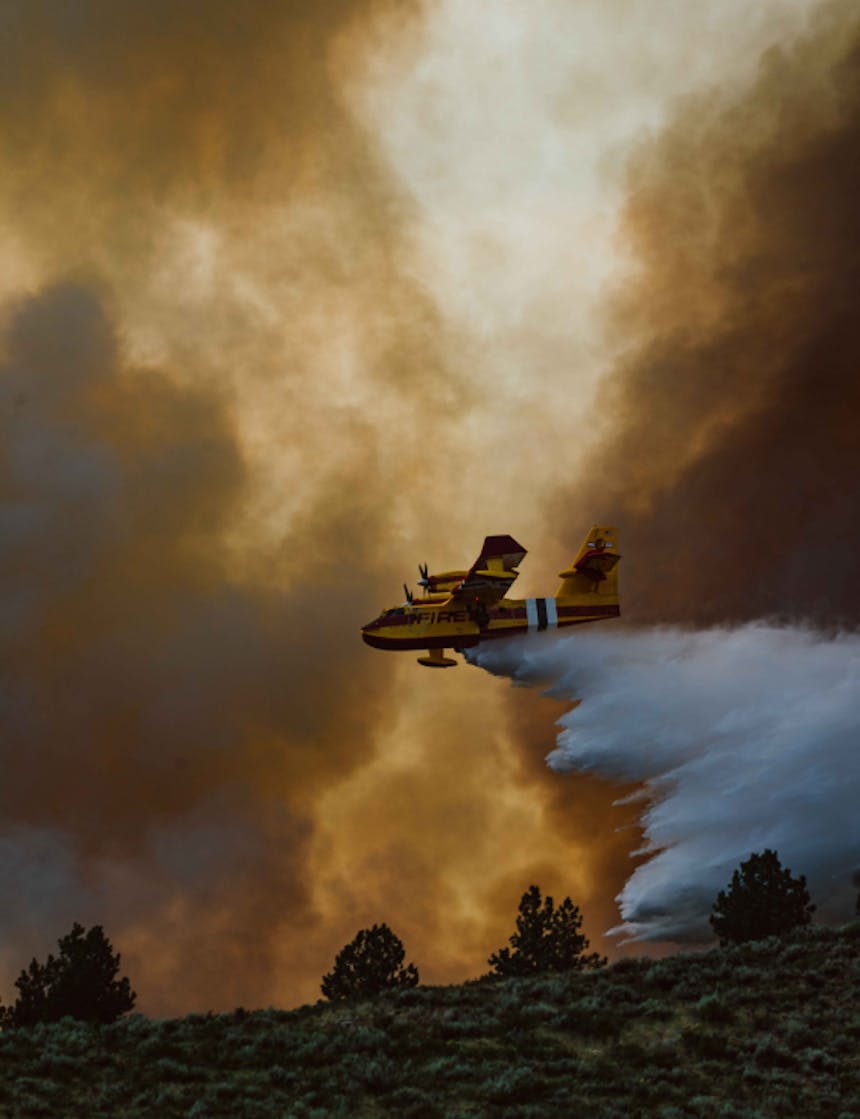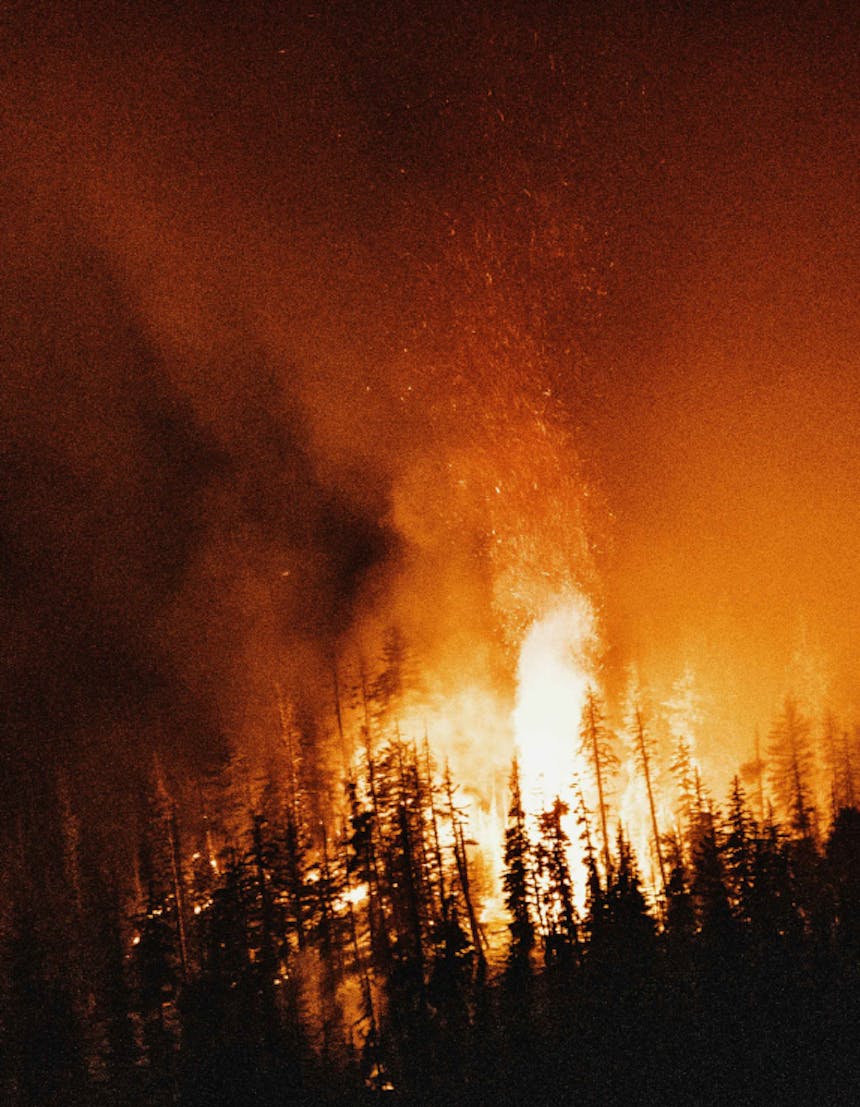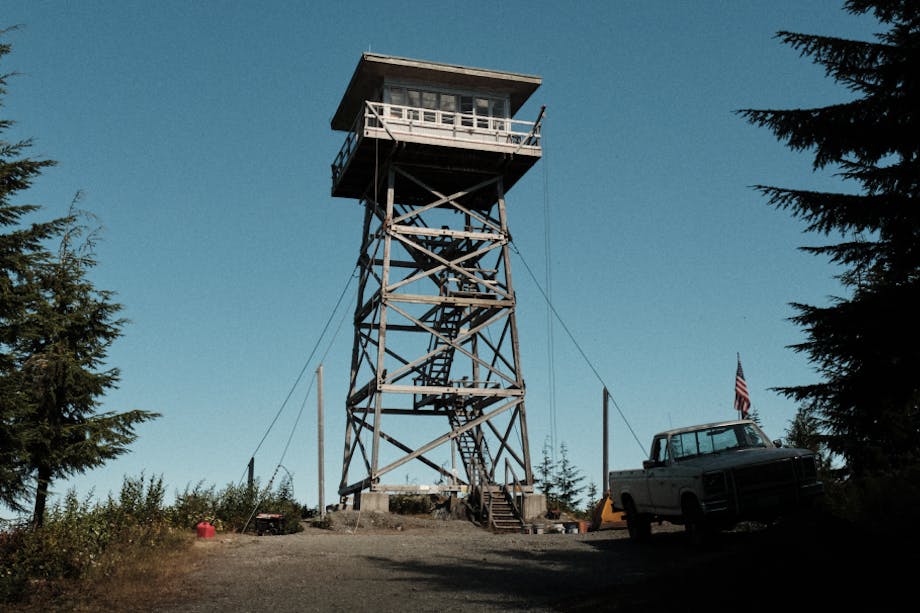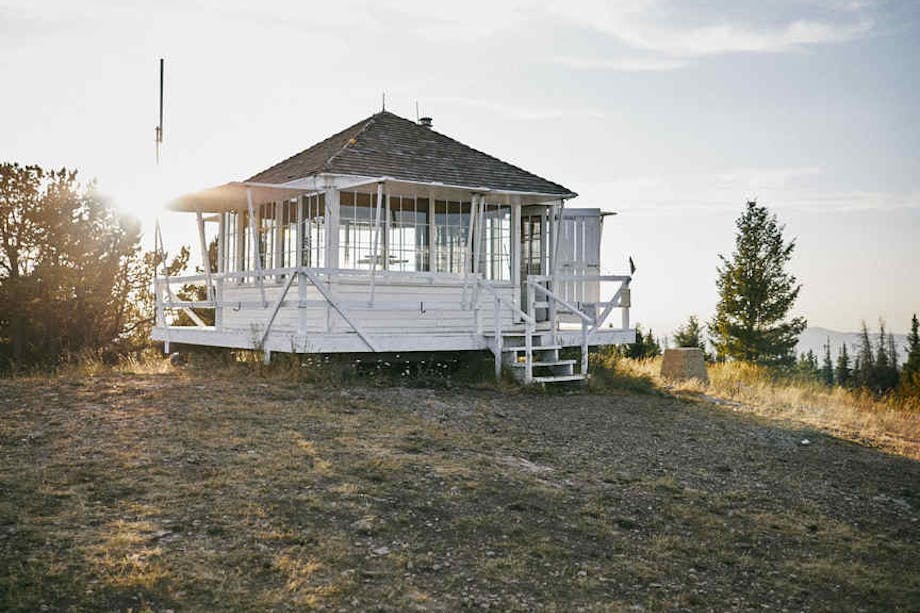Last month, a team of eager and passionate Filson employees, together with the National Forest Foundation, were wrapping up a restoration project at First Butte lookout tower, the fourth tower our team has volunteered to help restore. As we were putting the final touches on the tower, we received the news that a new wildfire had started near the site. We needed to get down the mountain immediately. As we left the forest service road, we saw the beginning of the Cub Creek 2 fire approaching the valley, while multiple air strikes spread fire retardant in attempts to save the surrounding Okanogan-Wenatchee National Forest.
By the next morning, the fire had grown to more than 8,000 acres and was moving fast. The forest service road we used to access First Butte was closed and the residents in the area had been evacuated. The Forest Service wanted to wrap First Butte tower in fire retardant material, just like they had done to save it during a wildfire more than 15 years ago, but they didn’t have the resources, as there were too many fires actively burning in the area.
We were lucky enough to safely return to our homes in Seattle, but we realize many Methow Valley locals don’t have that luxury as they face the daily fear and devastation of wildfire. Our hearts break for all that has been lost to the flames, now and throughout the past ten years, and this community’s ongoing efforts to cope with constant fires.
How can we help?


We can help support residents and the brave men and women helping to fight the fires by donating to any of these organizations:
Winthrop Firefighters Association: Support community firefighters.
Okanogan County Fire District 6: Most of the local fire department staff are volunteers and may need additional supplies.
The Cove: A Methow Valley Food Bank.
Room One: Non-profit assisting fire victims with basic needs.
How do we help reduce the risk of future fires?
While the Cub Creek 2 fire continues to rage, it is currently only one of at least 16 major fires burning in the Pacific Northwest. Over the past few decades, climate change has caused the West to become much hotter and drier, and it will continue to make weather more extreme and wildfires more frequent and intense. Like many Seattleites, we’ve been living through a record-breaking heat wave and have been forced to cancel camping trips because of wildfires and smoke. Our fear is that this is becoming the new normal.
These wildfires scorch our forests – the same forests we depend on to help mitigate climate change by removing carbon dioxide from the atmosphere. US forests play a critical role by offsetting 16 percent – three decades’ worth – of the country’s fossil fuel emissions each year.
A recent USDA Forest Service study found that forest managers could enhance carbon capture capabilities of existing forests by planting trees. According to the study, the federal government combined with state and private sectors have the capability to plant 1.2 billion trees per year, which could sequester enough CO2 to equal the amount of energy used to power between 1.8 and 3.2 million homes in a year.
To help achieve that goal and to do what we can to combat these devastating wildfires, we have committed to working with the National Forest Foundation to plant trees on national forest land across the US through the “50 Million Trees for Our Forests” campaign. We encourage you – local citizens, corporations and organizations who are witnesses to summers of smoke – to join us.
The opportunity to help restore one of these historical relics reminded the team of our love and appreciation for our national forests. Our forests provide us with natural resources, jobs, and endless outdoor recreation activities. More than half of Washington is forested – offering about 22 million acres for us to explore, camp, fish, and hike, something we often take for granted.




